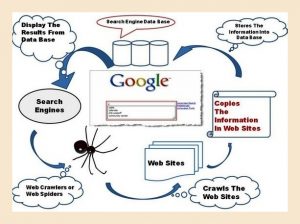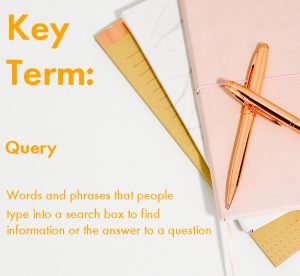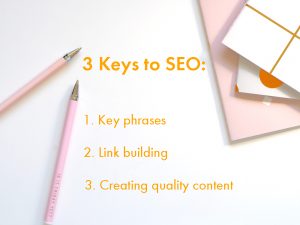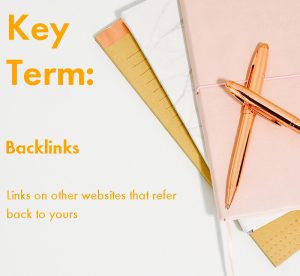M1- Introduction to SEO
What you will learn: How Google (and other search engines work), the different types of SEO and how they drive traffic to websites.
Task: Take a short quiz.
Time: 12 minutes to read the module and 5-6 minutes to take the quiz and read the answers.

Before we begin
Here are a few points on how to use this course:
‣ This course consists of 6 modules. Each module depends on material learned in previous courses, so I recommend doing them sequentially
‣ The quiz was carefully constructed to reinforce your knowledge of key points. You will learn easier and faster if you take it.
‣ The quiz was made in Google Forms, so you can see the correct answers after you complete the quiz. If you don’t know the answers, try and resist the temptation to peek. You will learn much better this way.
‣ The Tasks are where you do the actual work to drive more traffic to your website. You will be prompted to submit the more pertinent ones to Mary Clare for review and suggestions. Take advantage of it! That is what sets this course apart from other SEO courses on the internet- there is a real live SEO expert with 15 years of experience here to help you.
‣ The course comes with 2 free vouchers for live calls with Mary Clare to help: one if good for 15 minutes and the other for 30 minutes. If you get stuck or confused, use them! This is done by booking a call using this link: Mary Clare’s Schedule. If you need a little extra hand holding, you can also purchase additional credits of her consulting time.
Let’s get started!
How Google works
To explain this simply we are going to use an analogy: think of websites as books. Before Google existed, these “books” were scattered randomly around the world, completely unorganized. Google saw a massive opportunity and created something called the Google Search Index. This is essentially a library of all the websites in the world. It contains hundreds of billions of web pages and is well over 100,000,000 gigabytes in size.
Now, remember in school when you learned about the Dewey Decimal System? This is a system that was created to organize libraries. It put books in order by subjects so people could find them easily. Essentially, this is what Google does. It has created a system analogous to the Dewey Decimal System. However, unlike the Dewey Decimal System, which organizes libraries by subjects, it organizes all the pages on the internet by words.
How does your website get into the Google Search Index?
Google developed software called web crawlers. These crawlers look at web pages. When they see links on the web pages they follow these links, just like you do when you are browsing the internet. They go from link to link and bring data about those web pages back to Google’s Search Index. When crawlers find a web page and record it in the Search Index, it makes note of key features, like key phrases and website freshness.

Why is it called Google Search Index? Because the process of saving a web page into Google’s library is called indexing. As Google is not known for providing simple user experiences, it decided to call their library of web pages the Google Index. Because why make something simple for users when you can confuse them? ‣‣insert laughing while crying emoji here!
Then what happens?
The Google Search index contains hundreds of billions of web pages. The question is: how does Google filter through all this information to deliver search results? The answer is the Google Ranking System.
Once you start learning more about SEO, you will notice that the internet gets all aflutter when Google rolls out a new search algorithm. The truth is, there is not just one search algorithm but a whole series of them. These algorithms are sets of instructions computers are directed to use to find relevant search results. As you might know, Google’s algorithms are shrouded in secrecy. However, the company is transparent about the factors they take into account. They are:
1–The meaning of your query. To understand this, you need to keep in mind that computers are not people. Their languages are very different than ours. So, the first thing the algorithms try to do is understand what you are looking for. Google has built multiple language models to make this happen. They have also developed programs to understand synonyms and interpret spelling errors. Why is this important for SEO? There are currently three takeaways here. First, if you have a multilingual website, you must do SEO separately for each language. Second, you don’t need to worry about people spelling words wrong- they will still see optimal search results. Third, if you target niche searches, you can get more “bang for your buck” if your key phrase contains words with lots of synonyms.

2–Relevance of web pages. Algorithms analyze the content of webpages to assess whether the page contains information that might be relevant to what you are looking for. How do they do this? Primarily by looking at the key phrases people type into the search bar and seeing if they match the key phrases on web pages. If the key phrase appears in the headings or body of the text, the information is more likely to be relevant. Why is this important for SEO? Because key phrases are so important, much of what we will learn in this course is how to find key phrases important to your potential customers and how to put them in your web pages so Google easily sees them.
3–Quality of content. Search algorithms also aim to prioritize the most reliable sources available. They do this by looking at web pages that others have found valuable in similar searches. For example, if other prominent websites link to a page, the algorithms interpret this to mean that the site is trusted. Why is this important for SEO? Aside from focusing on key phrases, we will also focus on linking web page content to other sites and, ideally, getting other sites to link back to ours.

4–Usability of web pages. When ranking results, Google Search also evaluates whether web pages are easy to use. If a site loads slowly, is not well optimized for mobile, or looks differently in some browsers, usability will be negatively affected. Why is this important for SEO? Because we need to make sure that websites are functioning properly and loading quickly. This is referred to as Technical SEO, which we will discuss later in this module.
5–Context and settings. Information such as your location and past search history all help Google tailor search results to what is most useful and relevant. Why is this important for SEO? Knowing this can help you target content to specific markets and locations.
How do you use this information to your advantage?
Although Google’s algorithms are shrouded in secrecy, we can use the above information to do key phrase research and create content that appeals to Google. That is the fundamental reason that SEO works . . . computers are smart, but people are smarter! We know that if we focus on key phrases, links and creating quality content, we can get our web pages to climb to the top of search rankings.

The different types of SEO
There are three types of SEO: internal SEO, external SEO and technical SEO. The more of them you employ, the more you can boost your website’s ranking.
Internal SEO
Internal SEO, often referred to as on page SEO, is what you do on your own website to boost your search rankings. Primarily, this consists of writing quality content, focusing on optimal usage of key phrases and links. When you do this you are writing both for humans and for Google’s web crawlers. This is why SEO is as much of an art as it is a science.
This course focuses solely on internal SEO.
External SEO

External SEO is getting links to your website on other websites. These are called backlinks. As we learned earlier, Google’s algorithms are computers- not people. One of the primary ways these computers determine a website is important is by looking at links: links on your website and links from other websites (backlinks). Ideally, these backlinks come from sites that demonstrate “expertise, authoritativeness and trustworthiness.”
Although backlinks are extremely important, they are outside the scope of this course. If you want to learn about how to create quality backlinks that not only drive additional traffic to your website but also boost your search rankings, you can enroll in Take your SEO to a higher level when you complete this course.
Technical SEO
This refers to factors that make your website easy to use. It should load quickly, be well optimized for mobile and load well across browsers.
Key points
- Google Search Index is where Google stores and organizes the billions of web pages in the world
- Web crawlers are software that helps Google discover web pages. They do this by following links on sites they already know about
- Google Ranking Systems are series of algorithms that determine how informative and trustworthy web pages are
- SEO uses this knowledge of how Google works to communicate to Google’s computers that your web pages provide the most authoritative, relevant answer to a given search query

